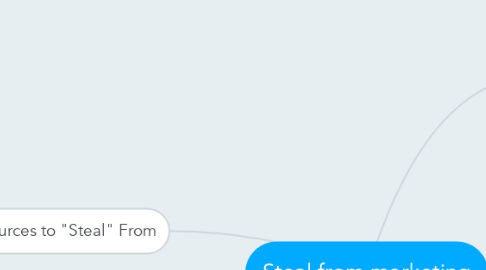
1. Marketing Sources to "Steal" From
1.1. CopyBlogger
1.2. Alltop - Marketing
1.3. http://www.nickkolenda.com/
2. 95% of behavior is subconscious
2.1. Attention
2.1.1. People pay attention to large photos & colors
2.1.1.1. Words are meaningless. On the surface, they represent arbitrary symbols — a mere conduit that conveys our meaning. Images, on the other hand, don’t require translation. Their meaning is immediate. Not surprisingly, images generate a larger emotional impact than words (Hinojosa et al., 2009).
2.1.2. Emotions: Danger, Food, Sex, Movement, Faces & Stories Get the most attention
2.1.3. PEOPLE ARE PROGRAMMED TO ENJOY SURPRISES
2.1.4. Trigger a positive emotion
2.1.4.1. Upon hearing your own name, certain brain regions become activated — including the middle frontal cortex, middle and superior temporal cortex, and cuneus (Carmody & Lewis, 2006).
2.2. Visuals
2.2.1. Matters what it looks like-PEOPLE USE LOOK AND FEEL AS THEIR FIRST INDICATOR OF TRUST
2.2.2. Put visuals on the left. “Because the right hemisphere is better suited to process pictorial information and the left one is more logical and verbal, placing the image on the left hand side of the text enhances the processing of the whole message…” (Grobelny & Michalski, 2015, pp. 87) http://www.nickkolenda.com/ad-characteristics/
2.2.3. Orient Models’ Gazes Toward Your CTA: As humans, we experience an inborn tendency to follow people’s gazes. That trait helped our ancestors discover threats more easily. And, thanks to evolution, that trait is still ingrained in our amygdala (Emery, 2000).
2.2.4. Enlarge Words That Convey an Emotion: Thus, not only will your enlarged words produce a stronger impact, but they’ll also capture attention more easily.
2.3. Your Messgae
2.3.1. Keep it simple
2.3.2. Use 'Positive Frames" Since we need more mental resources to process negative frames, they reduce comprehension and degrade the impact of your message (Jacoby, Nelson, & Hoyer, 1982). http://www.nickkolenda.com/copywriting-tips/#copywriting-tactic2
2.3.3. On the surface, they seem innocent. But don’t be fooled. Rhetorical questions make your arguments more persuasive (Petty, Cacioppo, & Heesacker, 1981).

